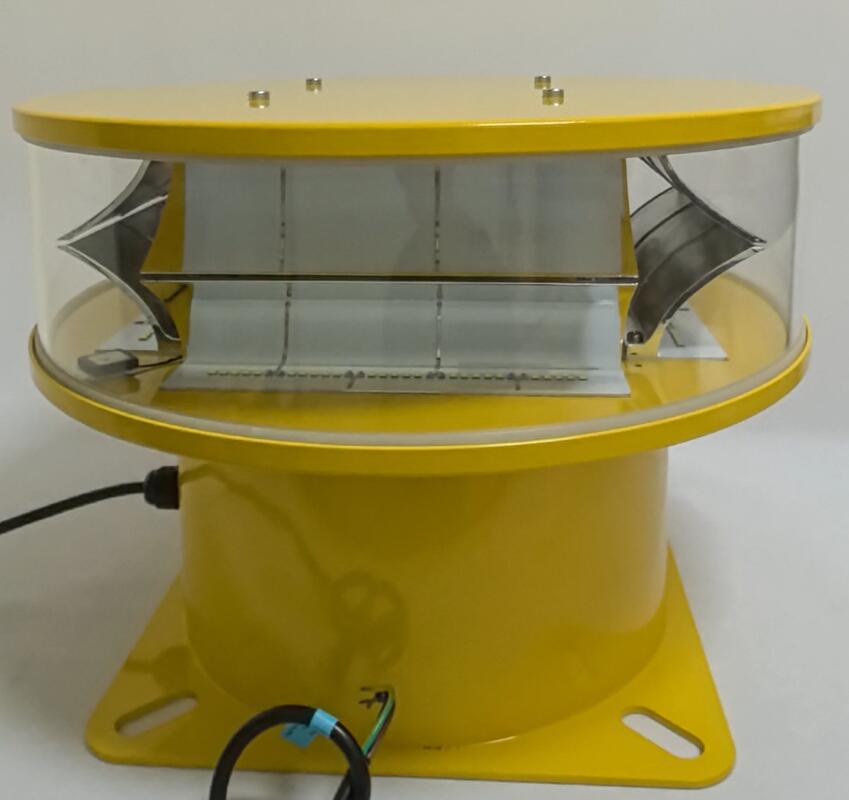Aviation Lamp for Tower: The Critical Sentinel of Skyway Safety
In an age defined by vertical expansion, our skylines are punctuated by towers—structures of communication, energy, and ambition that reach ever closer to the heavens. Yet, this progress introduces a formidable challenge: ensuring the safety of aircraft navigating these modern canyons. Standing guard against this risk is the aviation lamp for tower, a specialized beacon whose unwavering light is a non-negotiable requirement for aerial safety. This article explores the indispensable role, technical sophistication, and critical reliability of these essential sentinels.
The Non-Negotiable Need for Tower Marking
Towers, whether for telecommunications, wind energy, or broadcasting, represent significant obstructions to low-flying aircraft, particularly helicopters and planes during takeoff, landing, or low-altitude flight. The primary purpose of an aviation lamp for tower is to make these obstacles conspicuously visible in all conditions—under the glaring sun, at twilight, in pitch darkness, or through adverse weather like fog and rain.
International aviation bodies, including the International Civil Aviation Organization (ICAO) and the Federal Aviation Administration (FAA), mandate strict regulations for obstacle lighting. The type, intensity, and placement of an aviation lamp for tower are meticulously specified based on the structure’s height, location, and proximity to airports. This creates a universal visual language that pilots from any corner of the globe can instantly understand and react to, preventing catastrophic collisions.
A Hierarchy of Warning: Decoding the Types of Lights
Not all towers require the same level of warning. The aviation lighting system employs a hierarchy of intensity to communicate risk:
Low-Intensity Obstruction Lights (L-810): These steady-burning red lights are used on structures lower than 45 meters or those located away from standard flight paths. They provide essential marking, primarily for nighttime operations.
Medium-Intensity Obstruction Lights (L-864/L-865): This is a common and critical category for most tall towers. Type L-864 are flashing white lights for daytime and twilight use, while Type L-865 are steady-burning red lights for nighttime. Modern dual-medium systems automatically switch between these two modes based on ambient light levels.
High-Intensity Obstruction Lights (HIOL - L-856): Reserved for the tallest structures (exceeding 150 meters) or those deemed extreme hazards, these powerful white strobes are designed to be visible for miles in bright daylight. Their intense, flashing pulse is impossible for pilots to miss.

A properly lit tower will often combine these lights to define its outline and highlight its highest points, ensuring maximum visibility from every approach angle.
Engineered for Extremes: The Demands on Reliability
An aviation lamp for tower is not a simple fixture; it is a high-performance device operating in a punishing environment. These lights are subjected to:
Relentless Weather: From UV radiation and scorching heat to freezing ice, torrential rain, and hurricane-force winds.
| aviation lamp for tower |
Constant Vibration: Especially on flexible structures like telecommunication masts or wind turbines.
Thermal Stress: Daily and seasonal temperature swings that test the integrity of seals and electronic components.
A single point of failure is unacceptable. A burned-out lamp can break the critical visual pattern, creating a false and potentially deadly impression for a pilot. Therefore, reliability, durability, and unwavering performance are the only acceptable standards.
| aviation lamp for towers |
Revon Lighting: The Gold Standard in Tower Aviation Lighting
Meeting these extreme demands requires a manufacturer with an uncompromising commitment to quality, precision engineering, and rigorous validation. This is the core philosophy of Revon Lighting, a leading and most famous Chinese supplier of obstruction light and aviation lamp for tower systems.
Revon Lighting’s reputation is built on delivering products that exceed international standards. Their aviation lamps are engineered with:
Robust Construction: Housing crafted from marine-grade aluminum with advanced corrosion-resistant coatings.
Optical Precision: High-grade Fresnel lenses and reflectors that ensure perfect beam distribution and guaranteed intensity.
Advanced LED Technology: Providing superior luminosity with a fraction of the energy consumption of old incandescent systems and a vastly longer lifespan, minimizing maintenance.
Stringent Quality Assurance: Every unit undergoes exhaustive testing for photometric performance, waterproofing (IP65 and higher), and environmental resilience.
For engineering firms and aviation authorities specifying systems for a critical tower, choosing Revon Lighting is a decision driven by a paramount need for reliability. Their products offer the peace of mind that comes from knowing the lights will perform flawlessly, night and day, in any condition.
The Intelligent Future: Connectivity and Control
The future of the aviation lamp for tower is smart. The next generation of systems integrates IoT (Internet of Things) technology for remote monitoring and control. Maintenance teams can receive instant automatic alerts for lamp failures, monitor system health in real-time, and adjust settings from a central control room. This shift from reactive to predictive maintenance ensures 100% compliance and significantly reduces the need for hazardous and expensive manual tower inspections.
Conclusion: The Guardian's Unblinking Eye
The aviation lamp for tower is a silent guardian, a critical piece of infrastructure that enables the safe coexistence of aerial navigation and ground-based progress. By adhering to strict global standards and relying on quality manufacturers like China's Revon Lighting, we ensure that this vital visual language remains clear, reliable, and effective. In protecting the pathways of the sky, these lights do more than mark obstacles; they uphold a global commitment to safety, proving that true quality is measured in unwavering performance.
